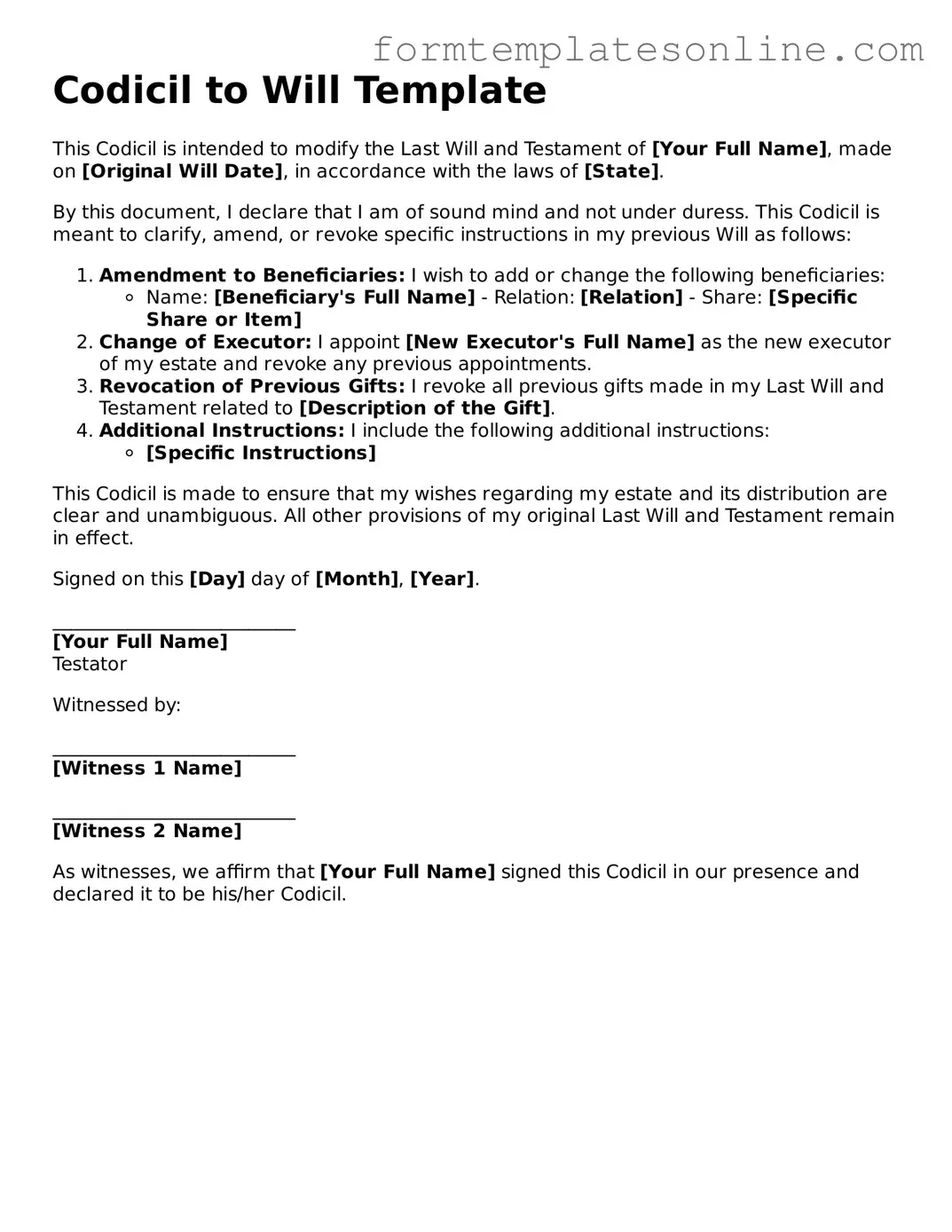Codicil to Will Template
This Codicil is intended to modify the Last Will and Testament of [Your Full Name], made on [Original Will Date], in accordance with the laws of [State].
By this document, I declare that I am of sound mind and not under duress. This Codicil is meant to clarify, amend, or revoke specific instructions in my previous Will as follows:
- Amendment to Beneficiaries: I wish to add or change the following beneficiaries:
- Name: [Beneficiary's Full Name] - Relation: [Relation] - Share: [Specific Share or Item]
- Change of Executor: I appoint [New Executor's Full Name] as the new executor of my estate and revoke any previous appointments.
- Revocation of Previous Gifts: I revoke all previous gifts made in my Last Will and Testament related to [Description of the Gift].
- Additional Instructions: I include the following additional instructions:
This Codicil is made to ensure that my wishes regarding my estate and its distribution are clear and unambiguous. All other provisions of my original Last Will and Testament remain in effect.
Signed on this [Day] day of [Month], [Year].
__________________________
[Your Full Name]
Testator
Witnessed by:
__________________________
[Witness 1 Name]
__________________________
[Witness 2 Name]
As witnesses, we affirm that [Your Full Name] signed this Codicil in our presence and declared it to be his/her Codicil.
